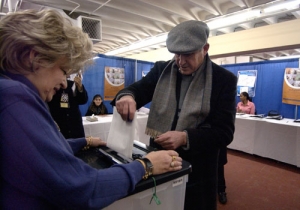
The system is a product not only of American politics but also of the development of technology as problems regarding transportation and communications were solved in the past 200 years. Basically, the system is not that complicated when traced backwards. In the simplest terms, the members of the College of Electors from 50 states and the District of Columbia get together and cast their votes for the president and vice-president of the United States. The candidates who get the highest number of votes win.
The electors represent the number of congressmen and senators in each state and are selected by the individual states through processes determined by each state. The way the electors vote is determined by their constituents. There are states where the electors are bound by their constituencies before they leave for Washington to cast their votes. There are states whose electors are not bound that way. They may change their minds.
The political parties (mainly Republicans and Democrats) contend for the electoral votes in each state. It's a "winner-take-all" situation. The winner carries all the electoral votes of that state. Within each party, there is a contest for delegates to the party national convention who in turn are elected or selected through intra-party struggles called primaries and caucuses. Each party determines how these contests take place and what the rules are for their own state. Not even the state legislature can go over the heads of the two parties.
The primaries are electoral contests between or among contenders for the nomination of each party. Caucuses are graduated elections with the party members voting for delegates to the next level which, in turn, selects delegates to the next higher level until the state caucus has a meeting of delegates selected from the party ranks all over the state. It starts from the precinct level to the district, the town or city level and then to the country level and winding up in a state caucus.
While the party members vote for their respective presidential and vice-presidential candidates in the primaries and caucuses, additional "bonus" delegates can be appointed by the national directorate of the party itself should it chooses to do so.
In the final analysis, the president and vice-president of the United States are elected by electors chosen by the states in a popular election within each state. The minority parties can get electors into the Electoral College in the states which do not adhere to the winner-take-all concept. Because of the winner-take-all concept in some states, it is entirely possible that close contests in some major states could result in the assignment of, say, all the electors of California to the Republican candidates although there may be a difference of only a few hundred votes between the two parties.
In another major state, the Democrats could conceivably win by a landslide and still get only a small number of electoral votes. Thus, it is possible for a president of the United States to get elected by a majority of votes in the Electoral College although he might not have received the majority of popular votes - the votes which are cast by individual voters for the electoral representatives.
American partisan politics gets complicated at its early stages and progressively simplifies as the system nears its end. The system works only through parties and since this is so, the government spends money in order to help the nomination of party candidates as well as in the election campaign of the two national parties. After the party candidates are chosen, the Federal government again spends money for each of the major contenders with a view to helping them explain their party platforms to the American voters.
Today, of course, it is technically possible to elect the president and the vice-president of the United States by direct vote. The advent of the voting machine has made this possible and has, at the same time, minimized the possibility of fraud. There is no such thing in the US as a split presidential ticket. The voter must choose the presidential and vice-presidential nominees of each party.
American politics has two peculiarities:
1) The major parties are allowed to make their own internal rules in the selection of their candidates.
2) There are limits imposed on the amount that individuals can contribute to any campaign.
Almost every election year, changes are introduced in the way each state chooses its electors. Party rules also change to conform to the wishes of the majority within the party.
All these activities wind up in the selection of 538 men and women who compose the Electoral College and actually cast the votes for selection of the president of the United States for a four-year term. They include two senators from each state plus a proportionate number to the population of members of the House of Representatives plus three from the District of Columbia.
The U.S. electoral system works because it is flexible in procedure but inflexible in its principle of just representation. And it works because the American people are vigilant enough to make it work.
